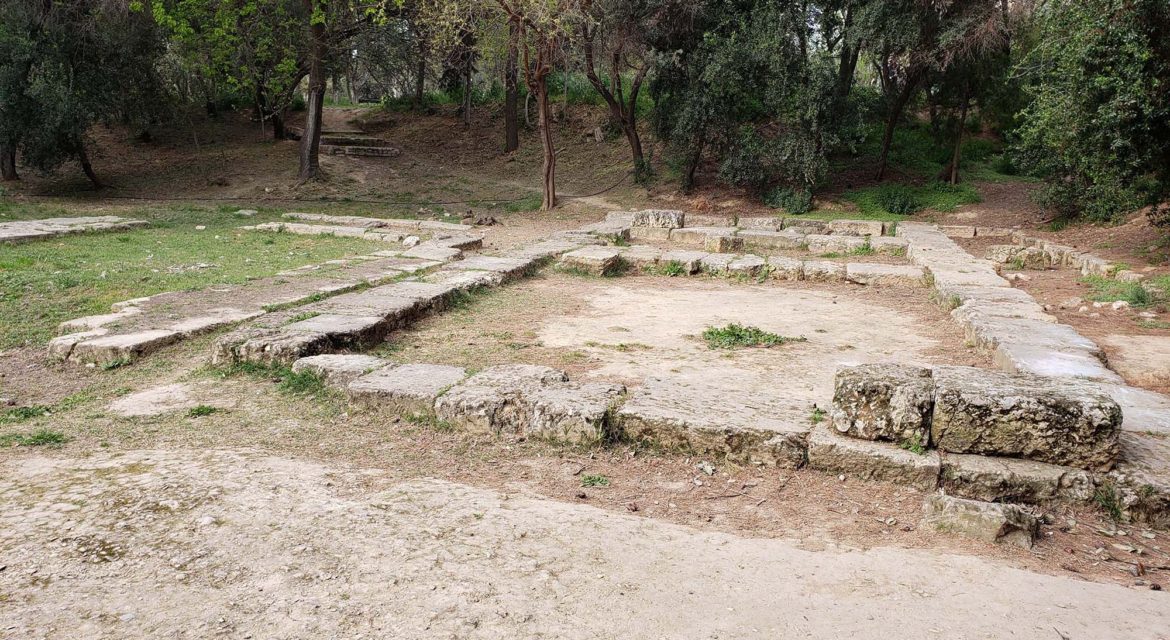 In 388 B.C., the philosopher Plato founded the Academy outside the city walls of ancient Athens. The school hosted informal gatherings with some of the most notable thinkers of the era, including Theaetetus of Sunium, Archytas of Tarentum and Aristotle. It is considered to be the first University in the entire world and came to inspire Western philosophy as a whole.
In 388 B.C., the philosopher Plato founded the Academy outside the city walls of ancient Athens. The school hosted informal gatherings with some of the most notable thinkers of the era, including Theaetetus of Sunium, Archytas of Tarentum and Aristotle. It is considered to be the first University in the entire world and came to inspire Western philosophy as a whole.
The Platonic Academy was destroyed in 86 B.C., but the site was rediscovered in the 20th century in the modern Akadimia Platonos neighborhood. Today, the area configured as Plato’s Academy Park resides in what used to be the Academy, and is now an archeological park. The foundations of the Gymnasium, the Proto-Helladic Vaulted House and the Peristyle Building are all viewable and accessible at Plato’s Academy Park. The Peristyle Building is especially notable, as it might be the only major building that belonged to the actual Academy of Plato.
The ruins of these buildings are both inspiring and impressive, seeing as how the philosophical systems that were developed in and around them guided the teachings at schools that would form the core of Western thought for thousands of years. However, little remains except for the foundations of these buildings, leaving visitors to for the most part imagine what the space once looked like.
 While the fact that the area is an archeological park limits the type and amount of new building that can be done there, attractions like the Plato Academy Digital Museum have been established. This small, purpose-built museum opened in November 2015 and contains interactive installations and video projections to help visitors navigate a profound world of ideas. It contains a digital replica of the cave, the philosophic concept which Plato described in The Republic.
While the fact that the area is an archeological park limits the type and amount of new building that can be done there, attractions like the Plato Academy Digital Museum have been established. This small, purpose-built museum opened in November 2015 and contains interactive installations and video projections to help visitors navigate a profound world of ideas. It contains a digital replica of the cave, the philosophic concept which Plato described in The Republic.
However, that museum is the only notable modern attraction in the area, as the rest of the park is empty and isolated, save for a few playgrounds. While the thrill of walking along the same paths as the people who inspired Western philosophy is palpable, the extremely limited places to engage with this history makes for an experience that is far less than it could be. The reality is that there is not much to see in Plato’s Academy Park, and that limits the kind of experiences that both residents and visitors can have with the space.
Other monuments in Athens have a similar monumentous potential, but plenty more have realized that potential, even if they are not much more than ruins. Plato’s Academy Park has the history, space and notoriety to be so much more, but being able to do so will be about recognizing the economic and cultural potential that the site possesses, and creating a monument or landmarks that can properly see that potential realized.
 Plato has become the philosopher who embodies the essence of the ancient Greek spirit. The echo of that sprit is visible across the ruins and vast space at Plato’s Academy Park, which underscores the potential of these ruins and space to make that much more of a monumentous impact on the community and visitors.
Plato has become the philosopher who embodies the essence of the ancient Greek spirit. The echo of that sprit is visible across the ruins and vast space at Plato’s Academy Park, which underscores the potential of these ruins and space to make that much more of a monumentous impact on the community and visitors.

